Nominations for the 2019-2020 Freshman Common Reading are officially closed.
The winner for 2019-2020 has been chosen! The Common Read for 2019-2020 is The Far Away Brothers by Lauren Markham.
Please note if you are reading this on a cell phone, the table may be cut off for you. If you turn your phone sideways, you should be able to see the whole page.
Members of the CSUN community (students, faculty, staff, and alums) are invited to submit their opinion about any of these nominated titles to the Freshman Common Reading blog. The blog is moderated, which means your submission requires approval before it is published.
If you'd like to nominate a title for CSUN's 2020-2021 Freshman Common Reading, please read the selection criteria and then fill out our brief online nomination form. For more information, read about our nomination process.
Nominated by Carolyn Darin From the publisher: The deeply reported story of identical twin brothers who escape El Salvador’s violence to build new lives in California—fighting to survive, to stay, and to belong. Growing up in rural El Salvador in the wake of the civil war, the United States was a distant fantasy to identical twins Ernesto and Raul Flores—until, at age seventeen, a deadly threat from the region’s brutal gangs forces them to flee the only home they’ve ever known. In this urgent chronicle of contemporary immigration, journalist Lauren Markham follows the Flores twins as they make their way across the Rio Grande and the Texas desert, into the hands of immigration authorities, and from there to their estranged older brother in Oakland, CA. Soon these unaccompanied minors are navigating school in a new language, working to pay down their mounting coyote debt, and facing their day in immigration court, while also encountering the triumphs and pitfalls of teenage life with only each other for support. With intimate access and breathtaking range, Markham offers an unforgettable testament to the migrant experience. Carolyn adds: It is a very current take on the issue of undocumented immigrants. We get to know two brothers who have crossed the border illegally, and I think our students would relate to them as they are about 17 when they cross, and of course face regular teenage issues as well as the stresses of being undocumented immigrants. Themes of acculturation & responsibility vs. regular teen issues (sexuality, family conflicts, work/school conflict) are also covered, which new college students might relate well to. The author also discusses Trump’s very recent proposals, in a way that (to me) was not preachy, but welcomes more thoughtful response to our country’s immigration policy. I think this would be a very thought-provoking book on many levels. Excerpt from the New York Times review: "One of the finest virtues of “The Far Away Brothers” is that it makes vibrantly real an issue that some see only as theoretical, illuminating aspects of the immigrant experience normally hidden from view. The obstacles the twins faced in getting their visas could be paradoxical, diabolical and sometimes downright ridiculous. Who would have known that their fate could ultimately hinge on finding a working fax machine in a small town in El Salvador? And on getting a signature from their parents, when the cruelty of their parents was the “official” reason they fled? (The real reason: A homicidal uncle was threatening to kill Ernesto, and enlisted the aid of a miniature goon squad to do the deed.)" The book may be available through CSU+ from another CSU campus. It is also available as a print book, an ebook, and an audio book from the Los Angeles Public Library (LAPL) |
Nominated by Michael Neubauer From the publisher: LOVE, DISHONOR, MARRY, DIE, CHERISH, PERISH leaps cities and decades as Rakoff sings the song of an America whose freedoms can be intoxicating, or brutal. The characters’ lives are linked to each other by acts of generosity or cruelty. A daughter of Irish slaughterhouse workers in early-twentieth-century Chicago faces a desperate choice; a hobo offers an unexpected refuge on the rails during the Great Depression; a vivacious aunt provides her clever nephew a path out of the crushed dream of postwar Southern California; an office girl endures the casually vicious sexism of 1950s Manhattan; the young man from Southern California revels in the electrifying sexual and artistic openness of 1960s San Francisco, then later tends to dying friends and lovers as the AIDS pandemic devastates the community he cherishes; a love triangle reveals the empty materialism of the Reagan years; a marriage crumbles under the distinction between self-actualization and humanity; as the new century opens, a man who has lost his way finds a measure of peace in a photograph he discovers in an old box—an image of pure and simple joy that unites the themes of this brilliantly conceived work. Michael adds: The book addresses sexual abuse, AIDS, LGBTQ, and the power of kindness and love. It would be an interesting idea to try a text that's a bit different from the usual novel or non-fiction texts the Freshmen Common Reading has been adopting. Excerpt from the NPR book review: Love, Dishonor, Marry, Die, Cherish, Perish encompasses all the activities in its title — which is the wordiest part of this slim but powerful volume. In a series of 12 loosely but oh-so-cleverly connected vignettes, Rakoff has created a series of snapshots of American society spanning most of the 20th century, with a focus on hardships that include poverty, rape, stroke, AIDS, adultery and Alzheimer's. In other words, "all that the Lord seemed to have in His toolkit / Of sadism, suffering, spite, pain, and bulls- - -." Keep in mind that Rakoff wrote this while dying from a disease that first struck him at 22. If this sounds grim, rest assured that this book, alluringly designed by Chip Kidd and illustrated by the cartoonist Seth, is filled with the sly, sharp social commentary that made Rakoff such a favorite on This American Life and in his best-selling essay collections, Fraud, Don't Get Too Comfortable, and Half Empty. He was, as he put it in a typically self-deprecating personal essay about his relationship with his longtime therapist, "possessed of a certain verbal acuity coupled with a relentless, hair-trigger humor and surface cheer spackling over a chronic melancholia and loneliness." What shines through in this novel, even more than in his nonfiction, is a piercing, wistful appreciation for life, love and art. The Oviatt Library does not own this book but it is available through CSU+. It is also available as a print book, an ebook, and an audio book from the Los Angeles Public Library (LAPL). |
Nominated by Lindsay Brown From the publisher: Tara Westover was seventeen the first time she set foot in a classroom. Born to survivalists in the mountains of Idaho, she prepared for the end of the world by stockpiling home-canned peaches and sleeping with her “head-for-the-hills” bag. In the summer she stewed herbs for her mother, a midwife and healer, and in the winter she salvaged metal in her father’s junkyard. Her father distrusted the medical establishment, so Tara never saw a doctor or nurse. Gashes and concussions, even burns from explosions, were all treated at home with herbalism. The family was so isolated from mainstream society that there was no one to ensure the children received an education, and no one to intervene when an older brother became violent. When another brother got himself into college and came back with news of the world beyond the mountain, Tara decided to try a new kind of life. She taught herself enough mathematics, grammar, and science to take the ACT and was admitted to Brigham Young University. There, she studied psychology, politics, philosophy, and history, learning for the first time about pivotal world events like the Holocaust and the Civil Rights Movement. Her quest for knowledge transformed her, taking her over oceans and across continents, to Harvard and to Cambridge University. Only then would she wonder if she’d traveled too far, if there was still a way home. Educated is an account of the struggle for self-invention. It is a tale of fierce family loyalty, and of the grief that comes from severing one’s closest ties. With the acute insight that distinguishes all great writers, Westover has crafted a universal coming-of-age story that gets to the heart of what an education is and what it offers: the perspective to see one’s life through new eyes, and the will to change it. Lindsay adds: This book made me think about families, children, education, culture, religion, and politics. The author's family lives off the grid, and does not trust the government. The author is careful not to comment negatively on Mormonism or religion and makes a clear disclaimer that she is reporting only on her family and how she was able to succeed despite their wishes that she remain with them and follow her values. Her mother works as a midwife (unlicensed) and the family's medical practices bring up interesting ethical and moral debates. The author later speculates that her father might have been bipolar, which can start a discussion regarding mental health. There is a lot to unpack in this well-written memoir, and although it has similarities to the Glass Castle, it may be more on point for our students, who are closer in age to the author, and live closer to Idaho than Appalachia. Excerpt from the New York Times review: "The extremity of Westover’s upbringing emerges gradually through her telling, which only makes the telling more alluring and harrowing. The basics are these: Now in her early 30s, she was the youngest of seven in a survivalist family in the shadow of a mountain in a Mormon pocket of southeastern Idaho. Her father, Gene (a pseudonym), grew up on a farm at the base of the mountain, the son of a hot-tempered father, and moved up the slope with his wife, the product of a more genteel upbringing in the nearby small town. Gene sustained his growing family by building barns and hay sheds and by scrapping metal in his junkyard; his wife, Faye (also a pseudonym), chipped in with her income from mixing up herbal remedies and from her reluctant work as an unlicensed midwife’s assistant and then midwife." The book may be available through CSU+ from another CSU campus. It is also available as a print book, an ebook, and an audio book from the Los Angeles Public Library (LAPL) |
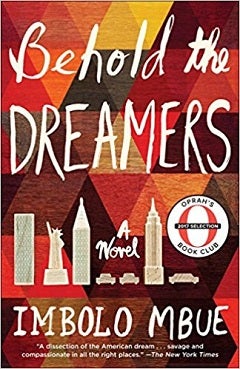 (Finalist) Behold the Dreamers, by Imbolo Mbue. 2016. 416 pages. (Finalist) Behold the Dreamers, by Imbolo Mbue. 2016. 416 pages.Nominated by Jamie Johnson From the publisher: When the financial world is rocked by the collapse of Lehman Brothers, the Jongas are desperate to keep Jende’s job—even as their marriage threatens to fall apart. As all four lives are dramatically upended, Jende and Neni are forced to make an impossible choice.sher: Jende Jonga, a Cameroonian immigrant living in Harlem, has come to the United States to provide a better life for himself, his wife, Neni, and their six-year-old son. In the fall of 2007, Jende can hardly believe his luck when he lands a job as a chauffeur for Clark Edwards, a senior executive at Lehman Brothers. Clark demands punctuality, discretion, and loyalty—and Jende is eager to please. Clark’s wife, Cindy, even offers Neni temporary work at the Edwardses’ summer home in the Hamptons. With these opportunities, Jende and Neni can at last gain a foothold in America and imagine a brighter future. However, the world of great power and privilege conceals troubling secrets, and soon Jende and Neni notice cracks in their employers’ façades. Jamie adds: A beautifully written story about family, dreams, what home means, and the different interpretations of the American dream. This book meets all the selection criteria and will draw freshman to reflect on themes/issues concerning immigration, power, financial crisis of 2007, marital difficulties, privilege, asylum, discrimination, empathy and dreams of a better future. The topics are timely given our current political environment and the ongoing conversation about immigration issues, law, and future policy. I could see varies departments or courses adapting this book including U100, Africana Studies, English, Political Science, Gender and Women’s Studies and Social Work. Excerpt from NPR Review: In 2008, the investment bank Lehman Brothers filed for the largest bankruptcy in American history. It took just hours for the catastrophic effects of the company's failure to become apparent to ordinary people all across the world, even ones who had never before heard terms like "subprime mortgage" and "collateralized debt obligation." Jende Jonga and his wife, Neni, two of the main characters in Imbolo Mbue's excellent debut novel, Behold the Dreamers, are among those people. Her book isn't the first work of fiction to grapple with the global financial crisis of 2007-2008, but it's surely one of the best. Behold the Dreamers is a remarkable debut. Mbue is a wonderful writer with an uncanny ear for dialogue — there are no false notes here, no narrative shortcuts, and certainly no manufactured happy endings. It's a novel that depicts a country both blessed and doomed, on top of the world, but always at risk of losing its balance. It is, in other words, quintessentially American. It may be available through CSU+. It is also available as a print book, an ebook, and an audio book from the Los Angeles Public Library (LAPL).
|
Nominated by Mariana Marquez. From the publisher: A ferociously intimate memoir by a devout woman from a modest family in Saudi Arabia who became the unexpected leader of the courageous movement that won Saudi women the right to drive. Manal al-Sharif grew up in Mecca the second daughter of a taxi driver, born the year strict fundamentalism took hold. In her adolescence, she was a religious radical, melting her brother’s boy band cassettes in the oven because music was haram: forbidden by Islamic law. But what a difference an education can make. By her twenties Manal was a computer security engineer, one of few women working in a desert compound built to resemble suburban America. That’s when the Saudi kingdom’s contradictions became too much to bear: she was labeled a slut for chatting with male colleagues, her school-age brother chaperoned her on a business trip, and while she kept a car in the garage, she was forbidden from driving on Saudi streets. Manal al-Sharif’s memoir is an “eye-opening” (The Christian Science Monitor) account of the making of an accidental activist, a vivid story of a young Muslim woman who stood up to a kingdom of men—and won. Daring to Drive is “a brave, extraordinary, heartbreakingly personal” (Associated Press) celebration of resilience in the face of tyranny and “a testament to how women in Muslim countries are helping change their culture, one step at a time” (New York Journal of Books). Mariana adds: "Manal al-Sharif's story is incredibly inspiring from page one. It begins with her arrest in the middle of the night and her experience in prison and then elaborates on her life and struggles as a woman living in Saudi Arabia. It allows for analysis of gender, religion, and politics and the different ways they intersect to maintain people in certain positions in society. It will encourage students to think about their privileges and the way that power dynamics function in different countries. Further more, it can serve as a catalyst for discussions of what feminism and empowerment mean to different women around the world. Most importantly, Manal al-Sharif's story can serve as a source of inspiration for students to become activists and fight for the causes they believe in. In our particular political climate, it is essential that the younger generations of students do not remain complacent with the policies of this administration and instead, use their voices to speak out about all the issues that impact their respective communities." Excerpt from the New York Journal of Books review: "In an already hostile environment she and her family had to deal with the laws of her country, which forbid women from leaving the house without a close male relative, refuse to give identity cards to women, and practice female genital mutilation as a norm. She paints a horrific picture of her home and school life, suffering repression and suppression of all sorts. Still, there are vignettes of laughter and love in a complex family system that allows for both positive and negative experiences in equal measure. There are glimpses of rich, vibrant Arab life in the markets, the Grand Mosque, and in homes. Especially intriguing are al-Sharif’s years where she is indoctrinated into the extremist Salafi ideology and begins to live a stricter life. She goes into detail of how the extremist version of Islam permeated each and every aspect of public life, from pledges of loyalty in schools that taught them to hate anyone who didn’t follow their brand of Islam, to preachers spewing fearful warnings of hellfire. She explains an incident when she heard a tape recording of a religious sermon that detailed the torture of hell." It may be available through CSU+. It is also available as a print book, an ebook, and an audio book from the Los Angeles Public Library (LAPL). |
Nominated by Cheryl Spector From the publisher: The true adventures of David Fairchild, a late-nineteenth-century food explorer who traveled the globe and introduced diverse crops like avocados, mangoes, seedless grapes–and thousands more–to the American plate. In the nineteenth century, American meals were about subsistence, not enjoyment. But as a new century approached, appetites broadened, and David Fairchild, a young botanist with an insatiable lust to explore and experience the world, set out in search of foods that would enrich the American farmer and enchant the American eater. Kale from Croatia, mangoes from India, and hops from Bavaria. Peaches from China, avocados from Chile, and pomegranates from Malta. Fairchild’s finds weren’t just limited to food: From Egypt he sent back a variety of cotton that revolutionized an industry, and via Japan he introduced the cherry blossom tree, forever brightening America’s capital. Along the way, he was arrested, caught diseases, and bargained with island tribes. But his culinary ambition came during a formative era, and through him, America transformed into the most diverse food system ever created. Cheryl adds: Everybody likes food. The subject of the book (globalizing the food palate of Americans in the 19th century) is still relevant now as we struggle with locally sourced food vs. "I want citrus NOW, even though it's only available in winter." The story opens when the botanist is 25. He's never been out of the country before and there he is in Italy, meeting the locals and trying his first homegrown fresh fig. Too many of our freshmen are hyper-local, not global. I'm thinking this book will broaden their horizons while also helping them recognize that "as American as apple pie" might be unexpectedly incorrect--or, alternatively, that it's VERY American indeed to import and incorporate the previously foreign..... Courses and contexts: political science, journalism, history, family & consumer sciences, sustainability, geography, nutrition, Study Abroad, ethics, economics, sustainability, social justice, and global studies. Significant issues: food, international trade, humans' love of the familiar.... Excerpt from the New York Times review: "Fairchild lived in optimistic times. Problems of land and crop management, he and his colleagues believed, were going to be solved in an entirely new way: “America’s goal wasn’t just to farm; it was to construct an industrial agricultural system bigger and more profitable than any group of people had ever built.” The bloom, of course, is off that rose, but it doesn’t make Fairchild’s story, and the profound role he played in ushering us into modernity, any less fascinating." The book may be available through CSU+ from another CSU campus. It is also available as a print book, an ebook, and an audio book from the Los Angeles Public Library (LAPL) |
Nominated by Catherine Givertz From the publisher: Heal small emotional injuries before they become big ones. We all sustain emotional wounds. Failure, guilt, rejection, and loss are as much a part of life as the occasional scraped elbow. But while we typically bandage a cut or ice a sprained ankle, our first aid kit for emotional injuries is not just understocked—it’s nonexistent. Fortunately, there is such a thing as mental first aid for battered emotions. Drawing on the latest scientific research and using real-life examples, practicing psychologist Guy Winch, Ph.D. offers specific step-by-step treatments that are fast, simple, and effective. Prescriptive and unique, Emotional First Aid is essential reading for anyone looking to become more resilient, build self-esteem, and let go of the hurts and hang-ups that are holding them back. Catherine adds: "Emotional First Aid" discusses the importance of self care, some of the common difficulties people face and strategies to overcome them. The book covers failure, guilt, rejection, and loss. Dr. Winch specifically discusses challenges that some college freshmen face including loneliness and leaving home (among others). This is an easy and fun book to read especially considering the significant topics. We could all use better self care and this book gives us the tools. Dr. Winch also has some great TED talks. Here is the link for one: https://www.ted.com/talks/guy_winch_why_we_all_need_to_practice_emotional_first_aid Excerpt from the Psychology Today review: "The idea of writing a self-help manual for the “emotional cuts and scrapes of daily life” is important and original. I've never read a book quite like it. For each typical emotional wound, Winch explains how your psyche can be damaged, what to do to begin the healing process, the signs that “infection” has set in, and when to consult with a mental health professional. As you might expect, Winch suggests emotional “band-aids” such as seeking and getting support for some injuries, such as loneliness; but he also includes a terrific section about when giving emotional support might backfire." This is not available through CSU+. It is available as a print book, an ebook, and an audio book from the Los Angeles Public Library (LAPL)
|
Nominated by Isabelle Ramos From the publisher: In Shaker Heights, a placid, progressive suburb of Cleveland, everything is planned – from the layout of the winding roads, to the colors of the houses, to the successful lives its residents will go on to lead. And no one embodies this spirit more than Elena Richardson, whose guiding principle is playing by the rules. Enter Mia Warren – an enigmatic artist and single mother – who arrives in this idyllic bubble with her teenaged daughter Pearl, and rents a house from the Richardsons. Soon Mia and Pearl become more than tenants: all four Richardson children are drawn to the mother-daughter pair. But Mia carries with her a mysterious past and a disregard for the status quo that threatens to upend this carefully ordered community. When old family friends of the Richardsons attempt to adopt a Chinese-American baby, a custody battle erupts that dramatically divides the town–and puts Mia and Elena on opposing sides. Suspicious of Mia and her motives, Elena is determined to uncover the secrets in Mia’s past. But her obsession will come at unexpected and devastating costs. Isabelle adds: "I believe this book would engage students as several characters in the book are at a point where they are trying to figure out what they want/hope to do with their lives. But bigger picture issues are also present in the book to encourage further reflection - adoption and the rights of a parent(s) is a background theme; morality and judgement as they pertain to judging how someone lives their lives/how they parent; themes of wanting to belong/be understood; how secrets and the reason to keep those secrets can affect others." Excerpt from the New York Times review: "Witnessing these two families as they commingle and clash is an utterly engrossing, often heartbreaking, deeply empathetic experience, not unlike watching a neighbor’s house burn. And the spectacle doesn’t stop with the Richardsons and Warrens. Ng also introduces a custody battle that becomes the center of the town’s attention — a 1-year-old girl who is wanted by both her Chinese immigrant mother and the white couple who has raised the baby. It’s this vast and complex network of moral affiliations — and the nuanced omniscient voice that Ng employs to navigate it — that make this novel even more ambitious and accomplished than her debut. If occasionally the story strains beneath this undertaking — if we hear the squeaky creak of a plot twist or if a character is too conveniently introduced — we hardly mind, for our trusty narrator is as powerful and persuasive and delightfully clever as the narrator in a Victorian novel. As soon as we meet our matriarch — “Mrs. Richardson stood on the tree lawn, clutching the neck of her pale blue robe closed” — we have the sneaky sense that our well-mannered narrator is speaking from both within and above the order-obsessed neighborhood." This book is available from CSUN and may also be available through CSU+ from another CSU campus. It is also available as a print book, an ebook, and an audio book from the Los Angeles Public Library (LAPL). |
Nominated by Keli Rowley From the publisher: Writer Susan Cain delivers a profound, paradigm-shifting book about the surprising advantages of being an introvert in an extroverted world. Based on five years of research in psychology and neurobiology, and on dozens of interviews, QUIET illuminates what it means to be an introvert or extrovert and eloquently calls for a new social order. Keli adds: "So many freshman tell me how much they hate being shy. This book will help empower them and see themselves in a more positive light. It will also be good for discussions about accepting people, seeing people’s strengths, talking about introverted people at school and in the workplace, etc... it’s an eye-opening look for both introverts and extroverts about the power of quiet people. I believe it will help them relate to people in better ways in terms of communication, compassion and acceptance." Excerpt from the New York Times review: "Many of the self-avowed introverts she meets in the course of this book, which combines on-the-scenes reporting with a wide range of social science research and a fair bit of “quiet power” cheerleading, ape extroversion. Though some fake it well enough to make it, going along to get along in a country that rewards the outgoing, something precious, the author says, is lost in this masquerade. Unchecked extroversion — a personality trait Cain ties to ebullience, excitability, dominance, risk-taking, thick skin, boldness and a tendency toward quick thinking and thoughtless action — has actually, she argues, come to pose a real menace of late. The outsize reward-seeking tendencies of the hopelessly outer-directed helped bring us the bank meltdown of 2008 as well as disasters like Enron, she claims. With our economy now in ruins, Cain writes, it’s time to establish “a greater balance of power” between those who rush to speak and do and those who sit back and think. Introverts — who, according to Cain, can count among their many virtues the fact that “they’re relatively immune to the lures of wealth and fame” — must learn to “embrace the power of quiet.” And extroverts should learn to sit down and shut up.' This book is available from CSUN and may also be available through CSU+ from another CSU campus. It is also available as a print book, an ebook, and an audio book from the Los Angeles Public Library (LAPL). |
Nominated by Vanessa Bustamante From the publisher: First published in Portuguese in 1968, Pedagogy of the Oppressed was translated and published in English in 1970. The methodology of the late Paulo Freire has helped to empower countless impoverished and illiterate people throughout the world. Freire's work has taken on especial urgency in the United States and Western Europe, where the creation of a permanent underclass among the underprivileged and minorities in cities and urban centers is increasingly accepted as the norm. With a substantive new introduction on Freire's life and the remarkable impact of this book by writer and Freire confidant and authority Donaldo Macedo, this anniversary edition of Pedagogy of the Oppressed will inspire a new generation of educators, students, and general readers for years to come. Vanessa adds: "This book draws new students into reading and reflection in helping them understand how to decolonize their minds and encourage intellectual growth by critically thinking and analyzing the ways in which they have been taught to learn. Additionally, the book encourages the understanding of diverse cultural perspectives by allowing the reader to understand the many ways in which oppression has taken form in institutional/academic settings and beyond." The Oviatt Library has multiple copies of this book. It is also available from the Los Angeles Public Library (LAPL) |
Nominated by Samuel Lingrosso From the publisher: Psychiatrist Viktor Frankl’s memoir has riveted generations of readers with its descriptions of life in Nazi death camps and its lessons for spiritual survival. Between 1942 and 1945 Frankl labored in four different camps, including Auschwitz, while his parents, brother, and pregnant wife perished. Based on his own experience and the experiences of others he treated later in his practice, Frankl argues that we cannot avoid suffering but we can choose how to cope with it, find meaning in it, and move forward with renewed purpose. Frankl’s theory—known as logotherapy, from the Greek word logos (“meaning“)—holds that our primary drive in life is not pleasure, as Freud maintained, but the discovery and pursuit of what we personally find meaningful. Samuel adds: This book teaches the power of the individual to overcome extreme adversity of outside circumstances through changing ones internal perspective. It would be useful in the context of many social science classes, including psychology, history, politics, philosophy and sociology. Excerpt from PsychCentral Review: In a 1991 survey for the Library of Congress, readers were asked to name a book that made a difference in their lives. Viktor Frankl’s Man’s Search for Meaning was among the top ten. It is a daunting task to review such a book. It goes without saying that Frankl’s seminal text is well worth reading and should, by most counts, be required for all students of psychology. This new edition contains an informative foreword by Harold Kushner, more forewords from previous editions, and Frankl’s own notable postscripts. Most important, however, is the main text, which remains a classic. During the Holocaust, Frankl spent three years as a prisoner in the Auschwitz and Dachau concentration camps. As such one of the fundamental aspects of Frankl’s book is the theme of survival. Although Frankl witnessed and experienced horror, Man’s Search for Meaning focuses less on the details of his own experience and more on how his time under Nazi rule showed him the human ability to survive and endure against all odds. The first half of the book attempts to answer a single question: “How was everyday life in a concentration camp reflected in the mind of the average prisoner?” Frankl gives examples of prisoners who found hope and the will to keep going even under torturous conditions — all of which, for Frankl, demonstrates the importance of what has become known as meaning making, regardless of situation. The Oviatt Library has multiple copies of the book. It is also available as a print book, an ebook, and an audio book from the Los Angeles Public Library (LAPL). |
Nominated by Kris Kouri Self published - no official publisher's page available. Kris says: During World War I, a Palestinian woman's husband disappears after he is conscripted into the Turkish army. In an attempt to support her family and prevent her husband's relatives from taking her children from her, she studies to become a midwife. The book is a historical family drama based on the life of the author's grandmother. The book can be used in Women Studies, English, and Middle Eastern studies courses. It teaches people about the history of the middle east during and immediately after the fall of Ottoman empire. It describes what life was like for the Palestinian people before the inception of the state of Israel. It describes the agency of a woman woman living in a traditional patriarchal society. Excerpt from Kirkus Reviews: Nisrina Huniah’s childhood is filled with tragedy and hardship. Born in a remote Palestinian village called Beit el Jebel near the turn of the 20th century, Nisrina’s mother died in childbirth, leaving her father, Isa, a grieving widower. She grows up with a loving stepmother, but her emotionally distant father wants her to marry rather than attend school with her best friend, Lamia. Despite her misgivings, she finds happiness and contentment with her husband, Jabran Yusef, a kind man who works in his family’s orchards. Prior to the birth of Nisrina’s third child, however, her world is shattered when Jabran is kidnapped by Turkish soldiers and forced to serve in their army. With his fate uncertain, Nisrina is left with a difficult choice: leave her children with the Yusef family and marry another man, or find a way to support herself and her children alone. She decides to attend a Catholic university and become a midwife, and this decision marks a pivotal turning point in her life; afterward, she struggles to keep her children and establish an independent identity in a tradition-bound society, while also holding out hope her beloved husband will one day return. Fiske’s ambitious novel successfully weaves several subplots into a single, emotionally rich tapestry. Nisrina’s story, particularly her education as a midwife, serves as the heart of the novel, but Jabran’s experiences as a conscript in the Turkish army are just as dynamic. These two characters are surrounded by a well-developed cast of supporting players, including members of Jabran’s extended family and the nuns at the university. The setting also plays an important role in the lives and fates of Fiske’s characters (“[T]he change in seasons…signaled the start of the sacred olive harvest, a month long event that brought together the young and the old, the strong and the weak”), and the author does a fine job of depicting daily life in a Middle Eastern village. A sweeping historical epic anchored by a compelling heroine, finely honed historical detail and a fully realized setting. Not available at the Oviatt Library, or through CSU+, or LAPL. You can try to get it through Inter Library Loan. |
Nominated by Jan Marquard From the publisher: Based on the Los Angeles Times newspaper series that won two Pulitzer Prizes, one for feature writing and another for feature photography, this page-turner about the power of family is a popular text in classrooms and a touchstone for communities across the country to engage in meaningful discussions about this essential American subject. Enrique’s Journey recounts the unforgettable quest of a Honduran boy looking for his mother, eleven years after she is forced to leave her starving family to find work in the United States. Braving unimaginable peril, often clinging to the sides and tops of freight trains, Enrique travels through hostile worlds full of thugs, bandits, and corrupt cops. But he pushes forward, relying on his wit, courage, hope, and the kindness of strangers. As Isabel Allende writes: “This is a twenty-first-century Odyssey. If you are going to read only one nonfiction book this year, it has to be this one.” Jan adds: I read this book years ago when it was first nominated for the common read and I have never forgotten it. I think it is especially important now with the status of immigration in the US. People in this country are divided about the "right" thing to do when someone comes to our border seeking asylum. Children and adults from several Central American countries and Mexico are faced with violence and issues we cannot even imagine. This book was a fast read and a page turner. I think students would really enjoy it. There are numerous ethical issues that could be discussed in class. Excerpt from Kirkus Review: 2003 Pulitzer Prize–winning author Nazario’s critically acclaimed book Enrique’s Journey, a heart-wrenching account of one young man’s journey to migrate illegally from Honduras to the United States to find the mother who left when he was 5, has been newly adapted for young people. Nazario’s vividly descriptive narrative recreates the trek that teenage Enrique made from Honduras through Mexico on the tops of freight trains. This adaptation does not gloss over or omit the harrowing dangers—beatings, rape, maiming and murder—faced by migrants coming north from Central America. The material is updated to present current statistics about immigration, legal and illegal, and also addresses recent changes in the economic and political climates of the U.S., Mexico and Honduras, including the increased danger of gang violence related to drug trafficking in Mexico. The book will likely inspire reflection, discussion and debate about illegal immigration among its intended audience. But the facts and figures never overwhelm the human story. The epilogue allows readers who are moved by Enrique to follow the family’s tragedies and triumphs since the book’s original publication; the journey does not end upon reaching the United States. The Oviatt Library has this book. It is also available as a print book, and an ebookfrom the Los Angeles Public Library (LAPL). |
Nominated by Terri Lisagor From the publisher: Survival for Ki Lim and Sang Ly is a daily battle at Stung Meanchey, the largest municipal waste dump in all of Cambodia. They make their living scavenging recyclables from the trash. Life would be hard enough without the worry for their chronically ill child, Nisay, and the added expense of medicines that are not working. Just when things seem worst, Sang Ly learns a secret about the bad-tempered rent collector who comes demanding money–a secret that sets in motion a tide that will change the life of everyone it sweeps past. The Rent Collector is a story of hope, of one woman’s journey to save her son and another woman’s chance at redemption. Terri adds: To sum it up, there but for the grace of ... go you or I. It gives pause to reflect on what we have - and often take for granted (education, shelter...) - and transports the reader into the extreme challenges faced by others; it focuses on perseverance and the spirit to prevail. And how just one exceptional gift (learning to read) can change the direction of one's life. This book ranks among the most meaningful that I've read - ever. I didn't want it to end, so I savored every word - and reflected on the human spirit. The characters are so relatable, especially to young people. Review from School Library Journal: In a contemporary story of hardship and hope, guilt and forgiveness, 29-year-old Sang Ly lives with her devoted husband, Ki, and her sickly baby, Nisay, at Stung Meanchey, an enormous municipal waste dump in Phnom Penh, Cambodia. Sang Ly and Ki are trash pickers, eeking out an existence by salvaging recyclables. The couple dreads the monthly visit of Sopeap Sin, the drunken, ill-tempered rent collector. But when Sang Ly discovers that Sopeap can read, she asks to learn and a tenuous friendship develops. Hoping to give her son a better life, she studies her lessons intently. As she works with her unpredictable but motivating teacher, Sang Ly uncovers Sopeap’s improbable past as a teacher and lover of literature and as a traumatized victim of the Khmer Rouge 1970’s reign of terror. When Sopeap disappears, Sang Ly’s understanding of her enables her to find the dying rent collector and to help her find redemption. Metaphoric dreams, fables, proverbs, and literary references are effectively woven into Sang Ly and Sopeap’s dual stories of salvation. Sopeap opens Sang Ly’s eyes to the heroes and positive aspects of her wasteland home. And, Sang Ly brings Sopeap face to face with a family that has haunted her life. Inspired by the lives of real people living in Stung Meanchey, Wright infuses this story with cultural nuance and authenticity. Initially, Sang Ly’s eloquent narration seems inconsistent with the limited realities of her life, but her engaging voice gains credibility as her compassionate, literary relationship with Sopeap unfolds. Through Sang Ly and the rent collector, readers will discover a wealth of insights: the lingering ravages of war, the common bonds of humanity, and the uplifting power of literature. It may be available through CSU+. It is also available as a print book, and an ebook from the Los Angeles Public Library (LAPL). |
Nominated by Laura Wimberley From the publisher: Stacey Haney is a local nurse working hard to raise two kids and keep up her small farm when the fracking boom comes to her hometown of Amity, Pennsylvania. Intrigued by reports of lucrative natural gas leases in her neighbors’ mailboxes, she strikes a deal with a Texas-based energy company. Soon trucks begin rumbling past her small farm, a fenced-off drill site rises on an adjacent hilltop, and domestic animals and pets start to die. When mysterious sicknesses begin to afflict her children, she appeals to the company for help. Its representatives insist that nothing is wrong. Alarmed by her children’s illnesses, Haney joins with neighbors and a committed husband-and-wife legal team to investigate what’s really in the water and air. Against local opposition, Haney and her allies doggedly pursue their case in court and begin to expose the damage that’s being done to the land her family has lived on for centuries. Soon a community that has long been suspicious of outsiders faces wrenching new questions about who is responsible for their fate, and for redressing it: The faceless corporations that are poisoning the land? The environmentalists who fail to see their economic distress? A federal government that is mandated to protect but fails on the job? Drawing on seven years of immersive reporting, Griswold reveals what happens when an imperiled town faces a crisis of values, and a family wagers everything on an improbable quest for justice. Laura adds: An interview with the author - https://slate.com/news-and-politics/2018/06/americas-rural-urban-divide-and-why-we-cant-seem-to-bridge-it.html From The National Book Review: “Exploiting energy often involves exploiting people,” writes Griswold in her powerful and deeply humane new book that focuses on the financially stressed rural southwestern Pennsylvania town of Amity and its neighbor, depopulated Prosperity. With her gifts as a poet and her journalistic tenacity, Griswold immerses herself in the lives of the “Hoopies,” the insider name for the hillbillies or hill jacks at this edge of Appalachia. At the emotional heart of this profoundly moving book is Stacey Haney, a nurse and single mother who realizes that her farmhouse, downhill from a pond polluted by fracking waste, has led to the life-threatening illnesses of herself and her children. Reminiscent of Jonathan Harr’s A Civil Action, Griswold's story traces the birth of Haney’s activism and how she galvanized other residents, enlisted lawyers, and, with mixed effects, reckoned with the fracking industry on behalf of those paying the human cost of America's thirst for energy. Not available through the Oviatt Library or CSU+. Currently on order through the Los Angeles Public Library (LAPL). |
Nominated by Joyce Marie Brusasco From the publisher: 'She throws her head back and pushes her chest forward and lets go a huge blast right into the centre of his body. The rivulets and streams of red scarring run across his chest and up around his throat. She'd put her hand on his heart and stopped him dead.' Suddenly - tomorrow or the day after - girls find that with a flick of their fingers, they can inflict agonizing pain and even death. With this single twist, the four lives at the heart of Naomi Alderman's extraordinary, visceral novel are utterly transformed, and we look at the world in an entirely new light. Joyce adds: This book gives many perspective on one issue. This recommendation came from my own 17 year old daughter. She loved the book and when I asked what I should recommend she did not hesitate to recommend this book. Excerpt from NPR book review: If you spend enough time talking with your most cynical friend about politics, you're likely to hear this quotation from the 19th-century British historian Lord Acton: "Power corrupts, and absolute power corrupts absolutely." It's a memorable axiom, but one that's been a little bit mangled by time — Acton actually wrote that "Power tends to corrupt." The misquoted version still pops up, however, thanks to pessimists who think that history has removed the need for Acton's original hedge. The question of whether power is bound to corrupt forms a central theme of Naomi Alderman's fascinating new novel, The Power. For the vast majority of recorded history, men have held power over women, treating them as lesser human beings, even objects that can be used or destroyed at will. Alderman's book asks an intriguing question: What if that power structure were reversed? The Power takes place in a society that looks much like our current one, except for one key difference: women have discovered that they have the ability to generate electrical power, which they can use to injure and kill men. The news picks up on the story after parents and teachers notice "a strange new kind of fighting which leaves boys ... breathless and twitching, with scars like unfurling leaves winding up their arms or legs or across the soft flesh of their middles." ... The atrocities that women visit upon men in Alderman's novel — humiliation, torture, genital mutilation — are all, of course, things that happen today, but with the genders reversed. That is, perhaps, the point of the novel — what a man reads as a horrifying dystopia, a woman reads as a fairly accurate state of the world as it is today. "We don't have to ask what they'd do if they were in control," as a mysterious voice tells Allie. "We've seen it already. It's worse than this." It may be available through CSU+. It is also available as a print book, an ebook, and an audio book from the Los Angeles Public Library (LAPL).
|
Nominated by Laura Wimberley From the publisher: We live in the age of the algorithm. Increasingly, the decisions that affect our lives - where we go to school, whether we get a loan, how much we pay for insurance - are being made not by humans, but by mathematical models. In theory, this should lead to greater fairness: everyone is judged according to the same rules, and bias is eliminated. And yet, as Cathy O'Neil reveals in this urgent and necessary book, the opposite is true. The models being used today are opaque, unregulated, and incontestable, even when they're wrong. Most troubling, they reinforce discrimination. Tracing the arc of a person's life, O'Neil exposes the black box models that shape our future, both as individuals and as a society. These "weapons of math destruction" score teachers and students, sort CVs, grant or deny loans, evaluate workers, target voters, and monitor our health. O'Neil calls on modellers to take more responsibility for their algorithms and on policy makers to regulate their use. But in the end, it's up to us to become more savvy about the models that govern our lives. This important book empowers us to ask the tough questions, uncover the truth, and demand change. Review from Scientific American: “The technology already exists. It’s only the will we’re lacking.” These sentences from Cathy O’Neil’s new book Weapons of Math Destruction have been haunting me since I read it. They come from the last chapter of a book in which she has illustrated again and again how, in the words of her subtitle, "big data increases inequality and threatens democracy." With Facebook's new trending topics algorithm and data-driven policing in the news, the book is certainly timely. Weapons of math destruction, which O’Neil refers to throughout the book as WMDs, are mathematical models or algorithms that claim to quantify important traits: teacher quality, recidivism risk, creditworthiness but have harmful outcomes and often reinforce inequality, keeping the poor poor and the rich rich. They have three things in common: opacity, scale, and damage. They are often proprietary or otherwise shielded from prying eyes, so they have the effect of being a black box. They affect large numbers of people, increasing the chances that they get it wrong for some of them. And they have a negative effect on people, perhaps by encoding racism or other biases into an algorithm or enabling predatory companies to advertise selectively to vulnerable people, or even by causing a global financial crisis. O’Neil is an ideal person to write this book. She is an academic mathematician turned Wall Street quant turned data scientist who has been involved in Occupy Wall Street and recently started an algorithmic auditing company. She is one of the strongest voices speaking out for limiting the ways we allow algorithms to influence our lives and against the notion that an algorithm, because it is implemented by an unemotional machine, cannot perpetrate bias or injustice. It may be available through CSU+. It is also available as a print book, an ebook, and an audio book from the Los Angeles Public Library (LAPL). |
Nominated by Jamie Johnson From the publisher: Sixteen-year-old Aza never intended to pursue the mystery of fugitive billionaire Russell Pickett, but there’s a hundred-thousand-dollar reward at stake and her Best and Most Fearless Friend, Daisy, is eager to investigate. So together, they navigate the short distance and broad divides that separate them from Russell Pickett’s son, Davis. Aza is trying. She is trying to be a good daughter, a good friend, a good student, and maybe even a good detective, while also living within the ever-tightening spiral of her own thoughts. Jamie adds: A deeply honest and sometimes painful look at one girl's struggle with mental illness and a debilitating obsessive-compulsive disorder. It is a coming of age book that highlights the various pressures youth face and learning how to cope when the world feels out of control. Major themes include wealth, privilege, power, mental illness, love, family strife, anxiety, and friendship. Excerpt from School Library Journal Review: Sixteen-year-old Aza Holmes first met Davis Pickett at “Sad Camp” the summers after fifth and sixth grades. Both Aza and Davis had recently lost parents and the kids bonded in their grief and fascination with the natural world. They’ve had little contact since then, even though they still live in Indianapolis, albeit in very different circumstances. When Davis’s billionaire CEO dad disappears on the eve of a fraud and bribery investigation, Aza’s best bud Daisy is intrigued, particularly since the police are offering a $100,000 reward for information about his whereabouts. The bright, talented girls worry about affording college and soon get caught up in solving the mystery. However, a lack of finances is just one of the myriad things, large (existential) and small (microbes), that Aza stresses about. She is living with debilitating anxiety and obsessive-compulsive responses to it. Despite years of therapy and meds, she works hard to function in the face of physically harrowing mental health challenges... As always, Green creates whip-smart and articulate characters who will charm, frustrate, and possibly annoy readers. The Oviatt Library has this book and it may be available through CSU+. It is also available as a print book, an ebook, and an audio book from the Los Angeles Public Library (LAPL). |
Nominated by Catherine Givertz From the publisher: In Callings, StoryCorps founder Dave Isay presents unforgettable stories from people doing what they love. Some found their paths at a very young age, others later in life; some overcame great odds or upturned their lives in order to pursue what matters to them. Many of their stories have never been broadcast or published by StoryCorps until now. We meet a man from the barrios of Texas whose harrowing experiences in a family of migrant farmers inspired him to become a public defender. We meet a longtime waitress who takes pride in making regulars and newcomers alike feel at home in her Nashville diner. We meet a young man on the South Side of Chicago who became a teacher in order to help at-risk teenagers like the ones who killed his father get on the right track. We meet a woman from Little Rock who helps former inmates gain the skills and confidence they need to rejoin the workforce. Together they demonstrate how work can be about much more than just making a living, that chasing dreams and finding inspiration in unexpected places can transform a vocation into a calling. Their shared sense of passion, honor, and commitment brings deeper meaning and satisfaction to every aspect of their lives. Catherine adds: This book discovers careers in every speciality from sports to NASA. The people represented in the book are very diverse and will excite CSUN freshmen. Isay discusses the importance of finding something to love in your every day life. Excerpt from the Forbes book review: We spend a good chunk of our lives on the job. Some of us locate the path to professional fulfillment early on. Others take a circuitous route, but eventually get there. Still others never find the true meaning in work. The inspiring new book, Callings, features 53 people who might teach us a few things about how to discover purpose and passion in work — at any age. The book’s stories come from StoryCorps, the 12-year-old oral history project in the tradition of Chicago's Studs Terkel whose captivating, personal tales are heard weekly on NPR’s Morning Edition. “Essentially, what we are collecting is the wisdom of humanity,” says StoryCorps founder Dave Isay, the Callings author. Callings is Isay's fifth book, culled from some 65,000 StoryCorps conversations that have been recorded over the past dozen years in its booths in New York, Chicago, Atlanta and San Francisco, as well as in an Airstream trailer that roams the country. (Another 80,000 stories have been generated from an app.) This is not available from the Oviatt or CSU+. It is available as a print book, an ebook, and an audio book from the Los Angeles Public Library (LAPL) |
Nominated by Catherine Givertz on behalf of CSUN student Paris McNeil From the publisher: Two girls who grow up to become women. Two friends who become something worse than enemies. In this brilliantly imagined novel, Toni Morrison tells the story of Nel Wright and Sula Peace, who meet as children in the small town of Medallion, Ohio. Their devotion is fierce enough to withstand bullies and the burden of a dreadful secret. It endures even after Nel has grown up to be a pillar of the black community and Sula has become a pariah. But their friendship ends in an unforgivable betrayal—or does it end? Terrifying, comic, ribald and tragic, Sula is a work that overflows with life. Paris adds: "Sula, which is a Novel written by Toni Morrison is a great read! This is a book that definitely sparks a lot of thought, analysis, and critical thinking which are all factors that are important in passing a college course. Although it is an older book, published in 1973 a lot of its major themes still exist today such as discrimination, gentrification, the issues that come with not conforming to social or communal trends, stress, coping methods, interpersonal relations and relationships with others, and self realization. I don't like reading, it has to be extremely interesting in order to get and keep my attention but this book hands down has to be one of the best I've read." Excerpt from New York Times book review: It's possible, I guess, to talk about "Sula" as allegory -- about people so paralyzed by the horrors of the past and by the demands of just staying alive that they're unable to embrace the possibilities of freedom until the moment for it has passed. but Toni Morrison's novel is too vital and rich to be confined within such limits. Her extravagantly beautiful, doomed characters are locked in a world where hope for the future is a foreign commodity, yet they are enormously, achingly alive. And this book about them -- and about how their beauty is drained back and frozen -- is a howl of love and rage, playful and funny as well as hard and bitter. When the rage gets directed at its characters as intensely as it does against the conditions that formed them, the bitterness sometimes takes over. One scene, in which the child Nel witnesses her majestic, usually holier-than-low mother cringing before a brutal, repulsive white train conductor, is close to devastating: the mother is depicted with an unsparing irony, unforgiven. Toni Morrison is someone who really knows how to clank a sentence, as the novelist Irving Rosenthal has put it, and her dialogue is so compressed and life-like that it sizzles. And Morrison's skill at characterization is such that, by the end, it's as if an enormous but too severely framed landscape has been unrolled and inhabited by people who seem almost mythologically strong and familiar; like the gorgeous characters of Garcia Marquez, they have a heroic quality, and it's hard to believe we haven't known them forever. The Oviatt Library has this book and it may be available through CSU+. It is available as a print book, an ebook, and an audio book from the Los Angeles Public Library (LAPL).
|
Nominated by Catherine Givertz (on behalf of CSUN student Dannia Sanchez From the publisher: The House on Mango Street is the remarkable story of Esperanza Cordero, a young Latina girl growing up in Chicago, inventing for herself who and what she will become. Told in a series of vignettes—sometimes heartbreaking, sometimes deeply joyous—Sandra Cisneros’ masterpiece is a classic story of childhood and self-discovery. Few other books in our time have touched so many readers. Dannia adds: "A book I would suggest the freshmen to read is The House on Mango Street by Sandra Cisneros. This book touches base in every college student's life and we all can relate to it one way or another which will spark an interest to our incoming freshmen, especially because this will be a huge change from what they were used to. This book is about a Chicana young girl who moved to the house on Mango Street (better neighborhood than she previously lived at). But it was not what she expected -- it was racially segregated. Esperanza had a vision of the life she wanted to have but in the environment she was in, that yet was not possible. Esperanza was also a writer and she used it as an escape. In the book you will see Esperanza mature and grow but also witness the hardships she goes through, including sexual assault. These things all made her realize she wanted to be in that neighborhood. She craved independence. She wanted to leave her neighborhood and live on her own. But she knew when that happened she would not actually really leave, she would come back and help those who she left behind. This book has many meanings within that help you connect with your inner thoughts. It also speaks about significant issues, includes cultural perspective, encourages discussion, and encourages one to grow intellectually." Excerpt from Diversity Council's book review: This critically acclaimed classic by Sandra Cisneros tells the story of Esperanza Cordero, a young Latina growing up in Chicago. Rather than a plot with a beginning and an end, Esperanza’s story consists of a series of brief vignettes that create a mosaic, fragmented pieces that come together to form a complex portrait of an immigrant girl’s life. Two paragraphs about her family’s hair. Three pages about her longings to take a sandwich to school for lunch. A quick story about the white girl with all the cats whose family is moving away because the neighborhood is filling up with immigrants. A page about the city’s skinny trees with deep roots. The Oviatt Library has this book and it may be available through CSU+. The Oviatt also has the ebook. It is available as a print book and an ebook from the Los Angeles Public Library (LAPL) |
Nominated by Catherine Givertz, on behalf of CSUN student Sophia Hejran From the publisher: The hero-narrator of THE CATCHER IN THE RYE is an ancient child of sixteen, a native New Yorker named Holden Caulfield. Through circumstances that tend to preclude adult, secondhand description, he leaves his prep school in Pennsylvania and goes underground in New York City for three days. The boy himself is at once too simple and too complex for us to make any final comment about him or his story. Perhaps the safest thing we can say about Holden is that he was born in the world not just strongly attracted to beauty but, almost, hopelessly impaled on it. There are many voices in this novel: children’s voices, adult voices, underground voices–but Holden’s voice is the most eloquent of all. Transcending his own vernacular, yet remaining marvelously faithful to it, he issues a perfectly articulated cry of mixed pain and pleasure. However, like most lovers and clowns and poets of the higher orders, he keeps most of the pain to, and for, himself. The pleasure he gives away, or sets aside, with all his heart. It is there for the reader who can handle it to keep. Hejran adds: "This is one of my all-time favorite books. I’ve read it three times, all at different points in my life and it’s really made me reflect on many aspects of the world around me. It’s known as the “great American high school novel” yet I find it very appropriate for college students as well. I really believe that many freshmen can grow intellectually by reading this book. The book is very well written and many people can relate themselves to the main character, Holden Caulfield. There are many instances in the book that college students can relate to, for example, Holden goes to a boarding school and has a roommate who he feels is better than him, similar to many students, Holden is often seen throughout the book running away from his problems instead of facing them. Overall, I think this book is an excellent choice for the freshman common read because it encourages thought and discussion, and it has many themes that students can relate to." Excerpt from the New York Times book review: Mr. Salinger, whose work has appeared in The New Yorker and elsewhere, tells a story well, in this case under the special difficulties of casting it in the form of Holden's first- person narrative. This was a perilous undertaking, but one that has been successfully achieved. Mr. Salinger's rendering of teen-age speech is wonderful: the unconscious humor, the repetitions, the slang and profanity, the emphasis, all are just right. Holden's mercurial changes of mood, his stubborn refusal to admit his own sensitiveness and emotions, his cheerful disregard of what is sometimes known as reality are typically and heart breakingly adolescent. The author evidently takes a dim view of prep-school life, and few writers have presented it with more effortless devastation. Holden's reminiscences and observations are short and to the point. "Pencey," he tells us, "was full of crooks. Quite a few guys came from these very wealthy families, but it was full of crooks anyway. The more expensive a school is, the more crooks it has. I'm not kidding." Holden is sometimes, but not for long, a little bitter, and it may be he has a tendency to generalize from too little evidence (in this case his camel's-hair coat had been stolen out of his room), but he has seen and done a lot for a 16-year-old, and a lot has been done to him. Mr. Salinger gives us a peek at Pencey's headmaster, who knows just which parents to talk with, which to ignore, gives a glimpse, too, of alumni and assorted students. Then there is a fine chapter in which Holden calls to say good-by to an ancient teacher, an unlovable Mr. Chips without wisdom or imagination. The Oviatt Library has this book and it may be available through CSU+. It is available as a print book and an ebook from the Los Angeles Public Library (LAPL). |
Nominated by Catherine Givertz on behalf of CSUN student Arlene Quintero From the publisher: When fifteen-year-old Maribel Rivera sustains a terrible injury, the Riveras leave behind a comfortable life in Mexico and risk everything to come to the United States so that Maribel can have the care she needs. Once they arrive, it’s not long before Maribel attracts the attention of Mayor Toro, the son of one of their new neighbors, who sees a kindred spirit in this beautiful, damaged outsider. Their love story sets in motion events that will have profound repercussions for everyone involved. Here Henríquez seamlessly interweaves the story of these star-crossed lovers, and of the Rivera and Toro families, with the testimonials of men and women who have come to the United States from all over Latin America. The Book of Unknown Americans is a stunning novel of hopes and dreams, guilt and love—a book that offers a resonant new definition of what it means to be American. Quintero adds: "The Book of Unknown Americans by Cristina Henríquez is a book that talks about America in an immigrant's perspective. This book does not only describe the struggles people live reaching for the American Dream but also talks about first-generation children. This book should be the next Freshman Common Read because it will make students reflect on how the US is viewed through different perspectives besides allowing many students to relate. The book will teach students about Man Vs. Nature enabling them to reflect on their struggles. Throughout the book, different themes are used helping students understand different perspectives and consider what many people go through in America." Excerpt from The Guardian book review: The unknown Americans of Cristina Henríquez's novel are Hispanic tenants of a run-down apartment building in a down-at-heel Delaware town. In particular, the novel centres on Maribel Rivera, a teenage girl with a severe brain injury. Her parents have left a comfortable life in Mexico, hoping that American special-needs education will restore their only child to her former self. The story of the poverty and isolation they find is told from two points of view: that of Maribel's mother, Alma, and of Mayor, a lonely neighbour boy who falls in love with Maribel. The strength of the book is in the quiet details that convey this family's tragedy: the first groceries bought at a gas station, the kitchen cabinets with bedsheets stapled over their fronts in place of doors, the panic of missing a stop on the bus when one doesn't share a language with the other passengers. Maribel's impairment is subtly, convincingly suggested, as is Mayor's growing dependence on her. At one point, Mayor watches Maribel waking up in a car, and notices "an indentation along her cheek where she'd been resting it against the seat belt". Throughout, the book is lit by sharp observations like these, and warmed by Henríquez's obvious affection for her characters. The Oviatt Library has this book and it may be available through CSU+. It is available as a print book, an ebook, and an audio book from the Los Angeles Public Library (LAPL). |
Nominated by Christina Espinoza-Guzman. From the publisher: In Furiously Happy, a humor memoir tinged with just enough tragedy and pathos to make it worthwhile, Jenny Lawson examines her own experience with severe depression and a host of other conditions, and explains how it has led her to live life to the fullest: "I've often thought that people with severe depression have developed such a well for experiencing extreme emotion that they might be able to experience extreme joy in a way that ‘normal people' also might never understand. And that's what Furiously Happy is all about." Jenny’s readings are standing room only, with fans lining up to have Jenny sign their bottles of Xanax or Prozac as often as they are to have her sign their books. Furiously Happy appeals to Jenny's core fan base but also transcends it. There are so many people out there struggling with depression and mental illness, either themselves or someone in their family—and in Furiously Happy they will find a member of their tribe offering up an uplifting message (via a taxidermied roadkill raccoon). Let's Pretend This Never Happened ostensibly was about embracing your own weirdness, but deep down it was about family. Furiously Happy is about depression and mental illness, but deep down it's about joy—and who doesn't want a bit more of that? Christina adds: "The book is ridiculous, and Jenny does not filter her language, but I think she bravely brings to light the scary ugliness that "we" don't like to talk about. When cancer victims don’t respond to medication, no one blames the cancer victim; people with mental illness don’t get the same respect. I think it's important to bring mental health into the open, particularly for our college aged population: 75% of lifetime mental disorders have first onset by the typical college age range of 18-24*. We need to discuss and equip our students." Excerpt from the Guardian book review: "Particularly good are Lawson’s descriptions of what it feels like to be buried in depression, convinced that the world will never again come into focus. Language starts to disappear, too, so that words either won’t come at all, or else slip past their intended meaning, leaving you gabbling at the postman in a way that does, actually, make you seem crazy. There is a particularly poignant moment in Furiously Happy when Lawson finds herself on a book tour in an edgy hotel in the Tenderloin district of San Francisco, where groups of homeless people huddle on every street. As she walks out to find some supper she is greeted by the hostile jabberings of men and women who are either high, severely mentally ill, or both. But Lawson knows what mildly inconvenienced tourists do not – that this could so easily be her or, indeed, any of us. There is only a sliver of good fortune separating people who sleep in cardboard boxes and shout angry insults to the moon, and the anxious middle-class woman on prescription medication who searches foggily for the right words when the waitress in the coffee shop asks her if she had a good weekend." It may be available through CSU+. It is also available as a print book, an ebook, and an audio book from the Los Angeles Public Library (LAPL). |

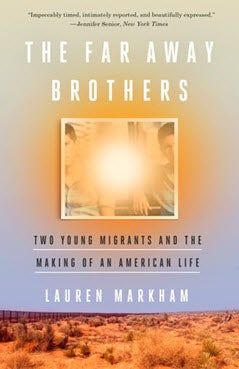 (Winner) The Far Away Brothers: Two Young Migrants and the Making of an American Life by Lauren Markham. 2017. 320 pages.
(Winner) The Far Away Brothers: Two Young Migrants and the Making of an American Life by Lauren Markham. 2017. 320 pages.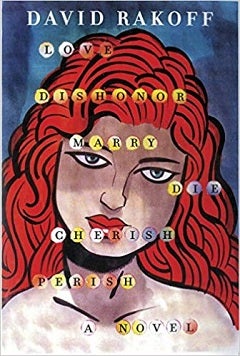
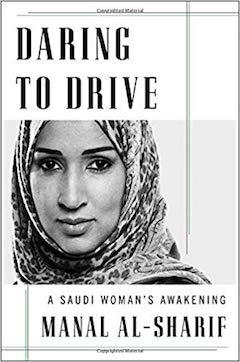 (Finalist) Daring to Drive: A Saudi Woman's Awakening, by Manal Al-Sharif. 2017. 320 pages.
(Finalist) Daring to Drive: A Saudi Woman's Awakening, by Manal Al-Sharif. 2017. 320 pages.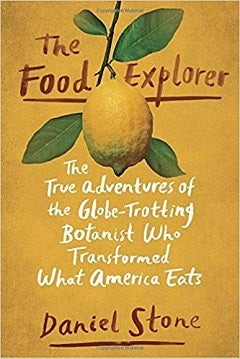 The Food Explorer: The True Adventures of the Globe-Trotting Botanist Who Transformed What America Eats by Daniel Stone. 2018. 416 pages.
The Food Explorer: The True Adventures of the Globe-Trotting Botanist Who Transformed What America Eats by Daniel Stone. 2018. 416 pages.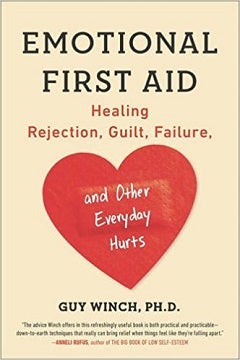 Emotional First Aid: Healing, Rejection, Guilt, Failure, and Other Everyday Hurts, by Guy Winch, PhD. 2013. 304 pages.
Emotional First Aid: Healing, Rejection, Guilt, Failure, and Other Everyday Hurts, by Guy Winch, PhD. 2013. 304 pages. 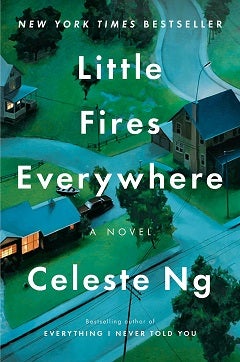 Little Fires Everywhere, by Celeste Ng. 2017. 352 pages.
Little Fires Everywhere, by Celeste Ng. 2017. 352 pages.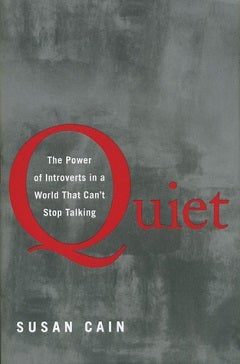 Quiet: The Power of Introverts in a World That Can't Stop Talking, by Susan Cain. 2012. 368 pages
Quiet: The Power of Introverts in a World That Can't Stop Talking, by Susan Cain. 2012. 368 pages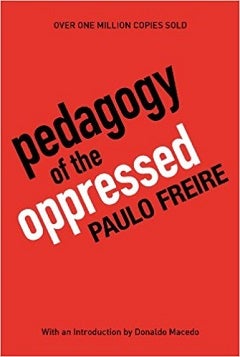 Pedagogy of the Oppressed, by Paulo Freire. 1968. 183 pages.
Pedagogy of the Oppressed, by Paulo Freire. 1968. 183 pages.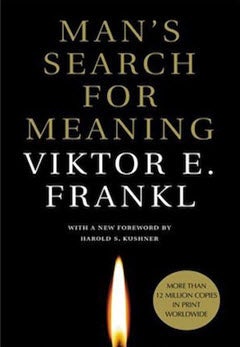 Man's Search for Meaning, by Viktor E. Frankl. 1946. 184 pages.
Man's Search for Meaning, by Viktor E. Frankl. 1946. 184 pages.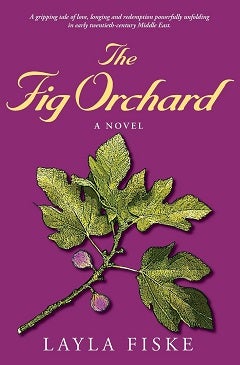 The Fig Orchard, by Layla Fiske. 2013. 450 pages.
The Fig Orchard, by Layla Fiske. 2013. 450 pages.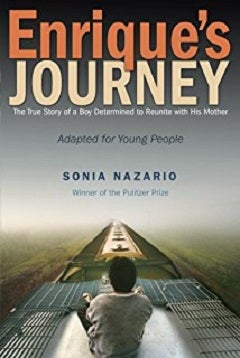 Enrique's Journey, by Sonia Nazario. 2007. 299 pages.
Enrique's Journey, by Sonia Nazario. 2007. 299 pages.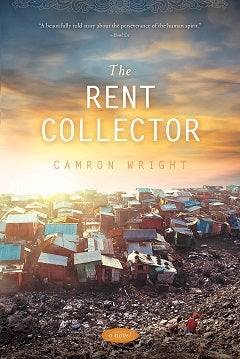 The Rent Collector, by Camron Wright. 2013. 288 pages.
The Rent Collector, by Camron Wright. 2013. 288 pages.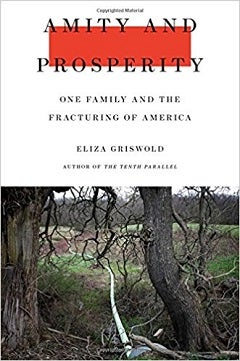 Amity and Prosperity: One Family and the Fracturing of America, by Eliza Griswold. 2018. 336 pages.
Amity and Prosperity: One Family and the Fracturing of America, by Eliza Griswold. 2018. 336 pages. 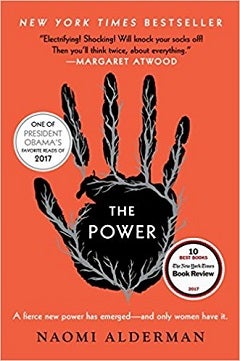 The Power, by Naomi Alderman. 2017. 400 pages.
The Power, by Naomi Alderman. 2017. 400 pages.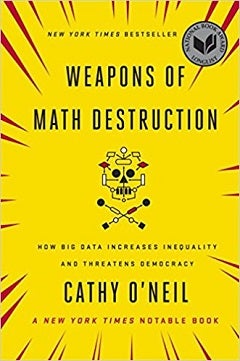 Weapons of Math Destruction: How Big Data Increases Inequality and Threatens Democracy, by Cathy O'Neil. 2016. 288 pages.
Weapons of Math Destruction: How Big Data Increases Inequality and Threatens Democracy, by Cathy O'Neil. 2016. 288 pages. 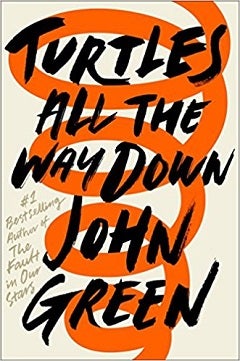 Turtles All the Way Down, by John Green. 2017. 304 pages.
Turtles All the Way Down, by John Green. 2017. 304 pages. Callings: The Purpose and Passion of Work, by Dave Isay. 2017. 288 pages.
Callings: The Purpose and Passion of Work, by Dave Isay. 2017. 288 pages.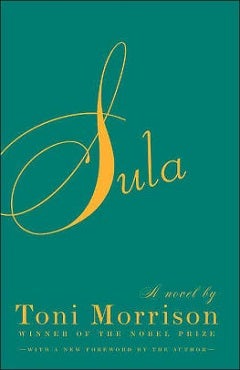 Sula, by Toni Morrison. 1973. 192 pages.
Sula, by Toni Morrison. 1973. 192 pages.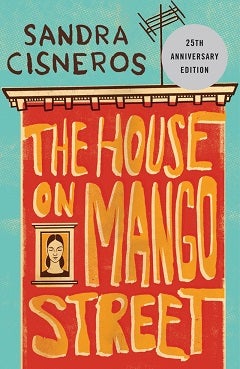 The House on Mango Street, by Sandra Cisneros. 1984. 110 pages.
The House on Mango Street, by Sandra Cisneros. 1984. 110 pages.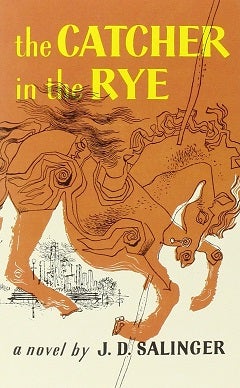 The Catcher in the Rye, by J.D. Salinger. 1951. 240 pages.
The Catcher in the Rye, by J.D. Salinger. 1951. 240 pages.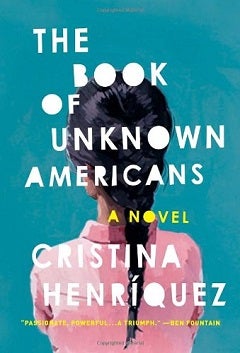 The Book of Unknown Americans, by Christina Henríquez. 2014. 304 pages.
The Book of Unknown Americans, by Christina Henríquez. 2014. 304 pages.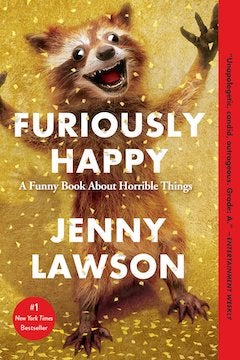 Furiously Happy: A Funny Book About Horrible Things, by Jenny Lawson. 2015. 352 pages.
Furiously Happy: A Funny Book About Horrible Things, by Jenny Lawson. 2015. 352 pages.